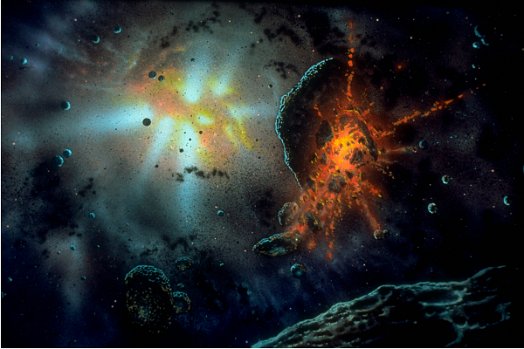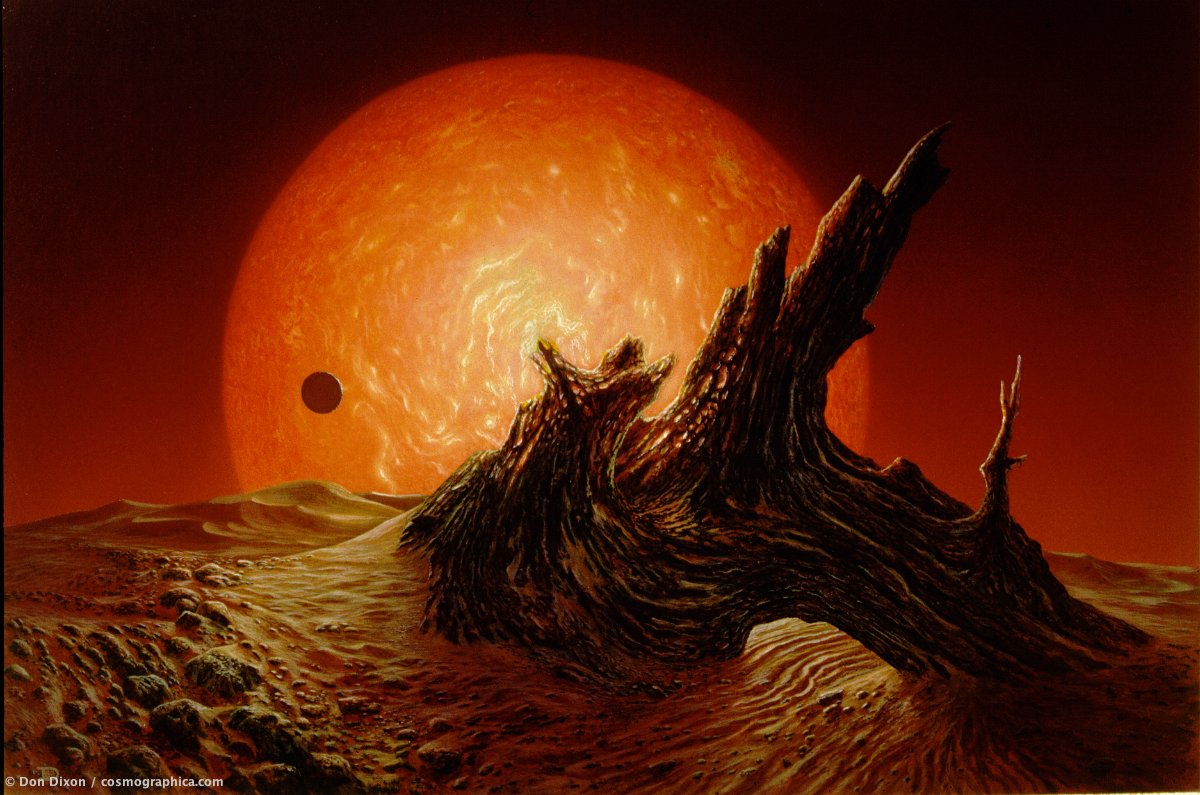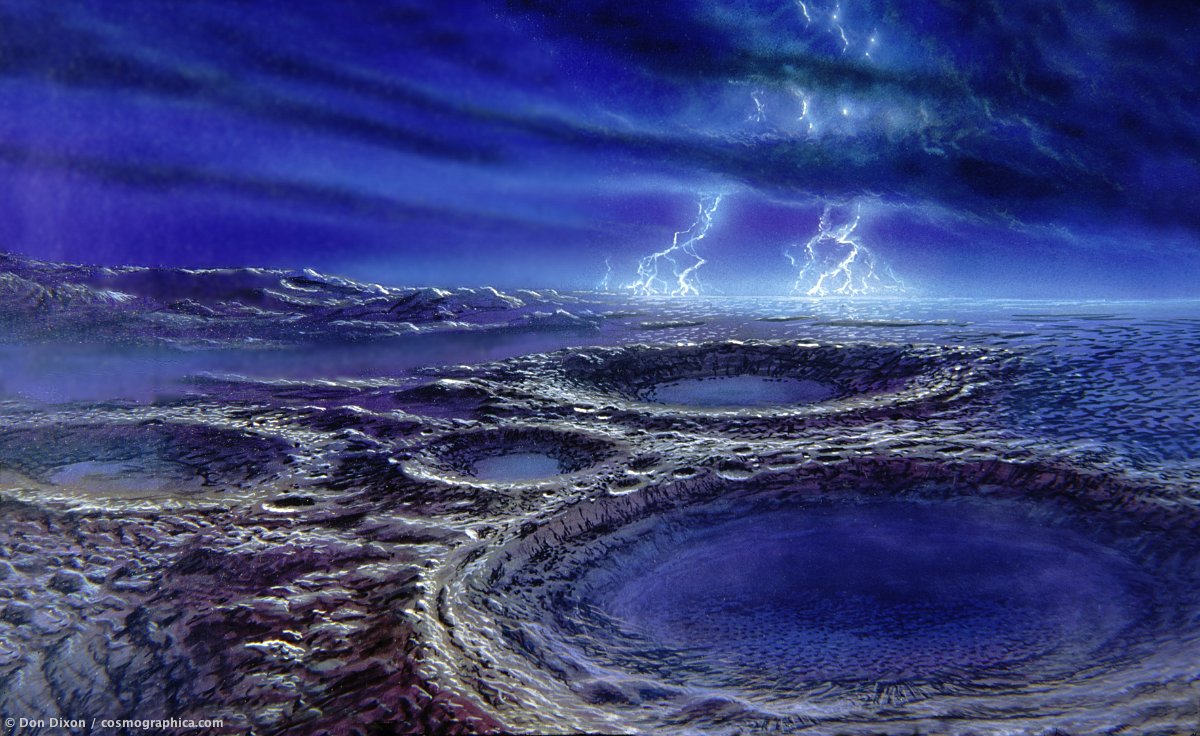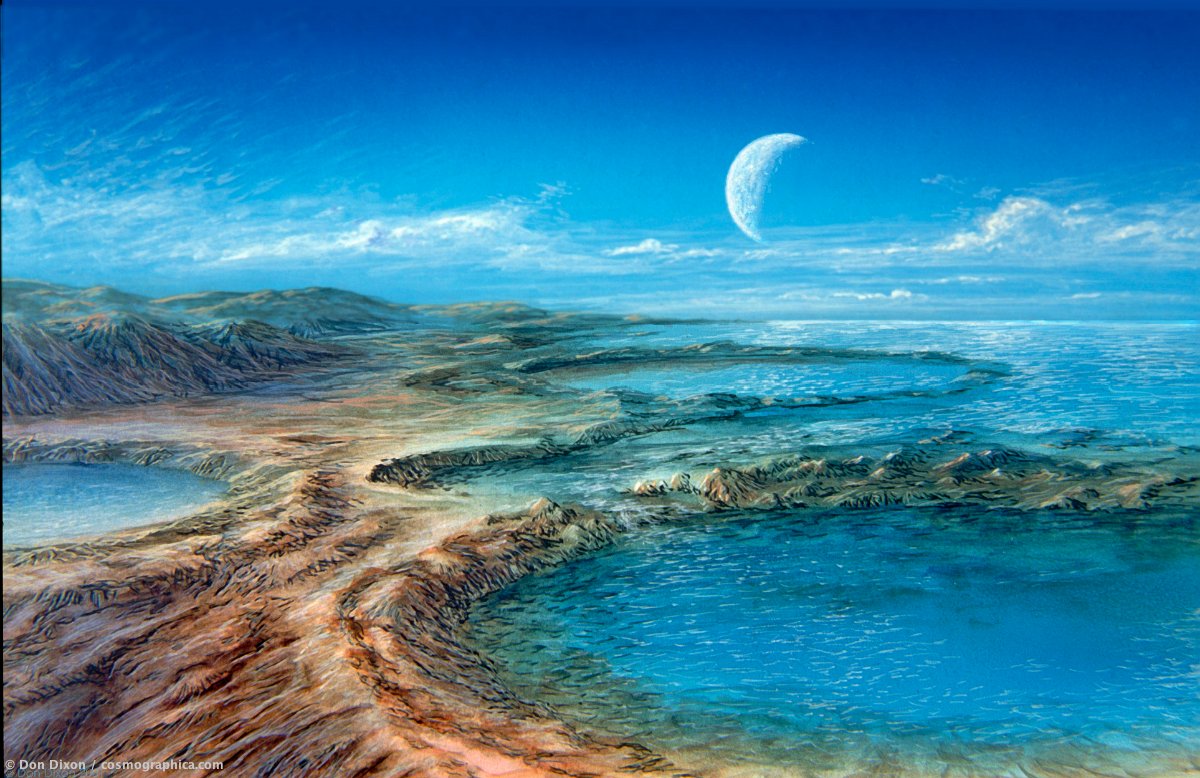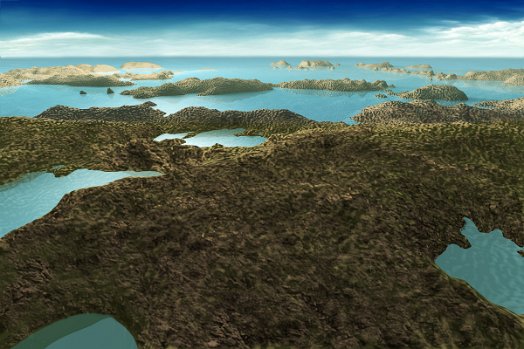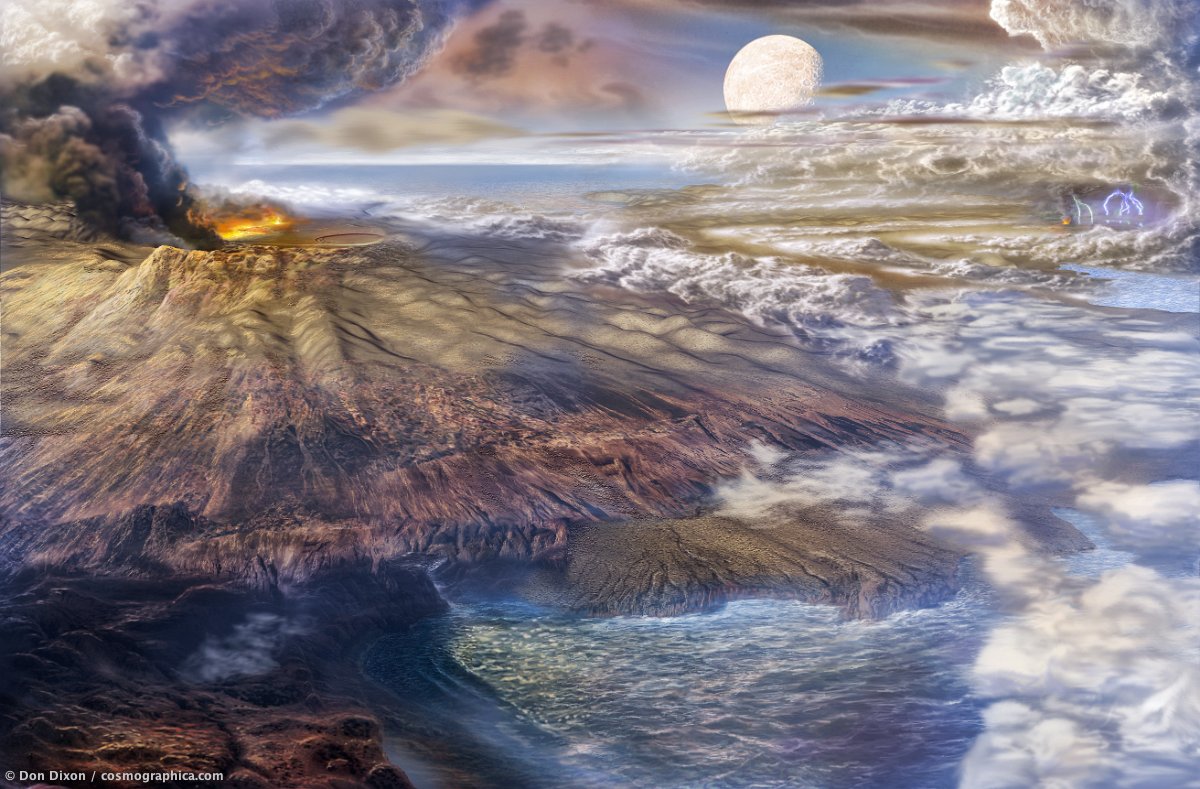
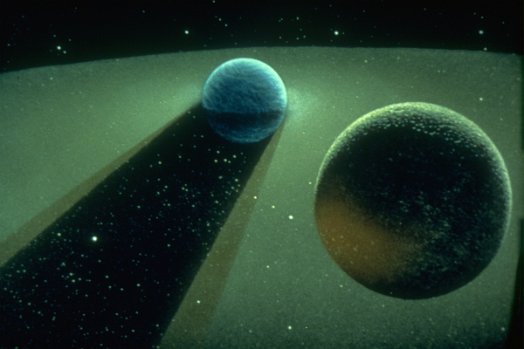
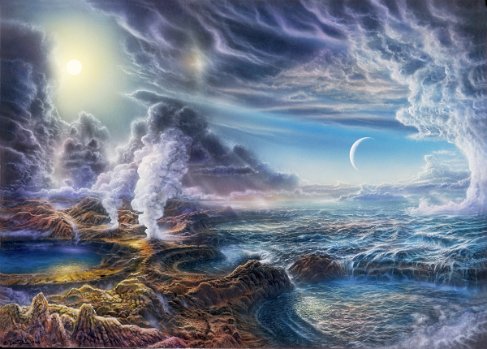
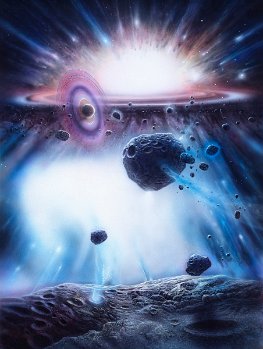
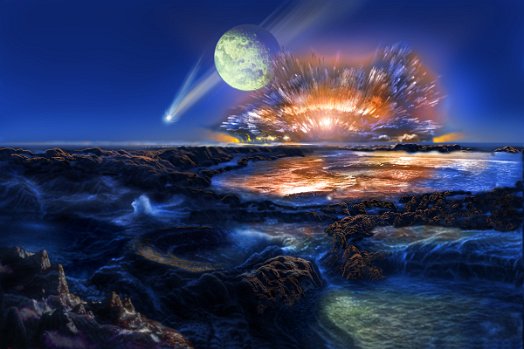
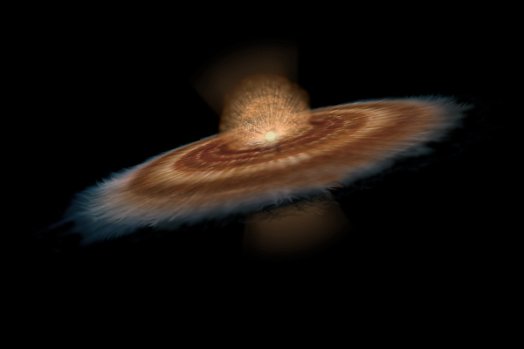
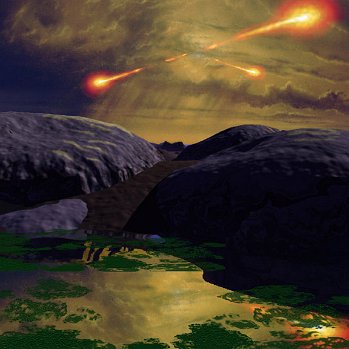
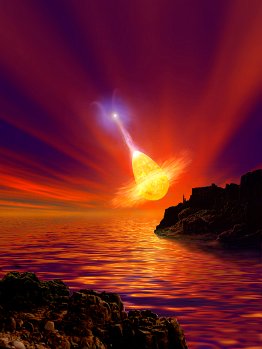
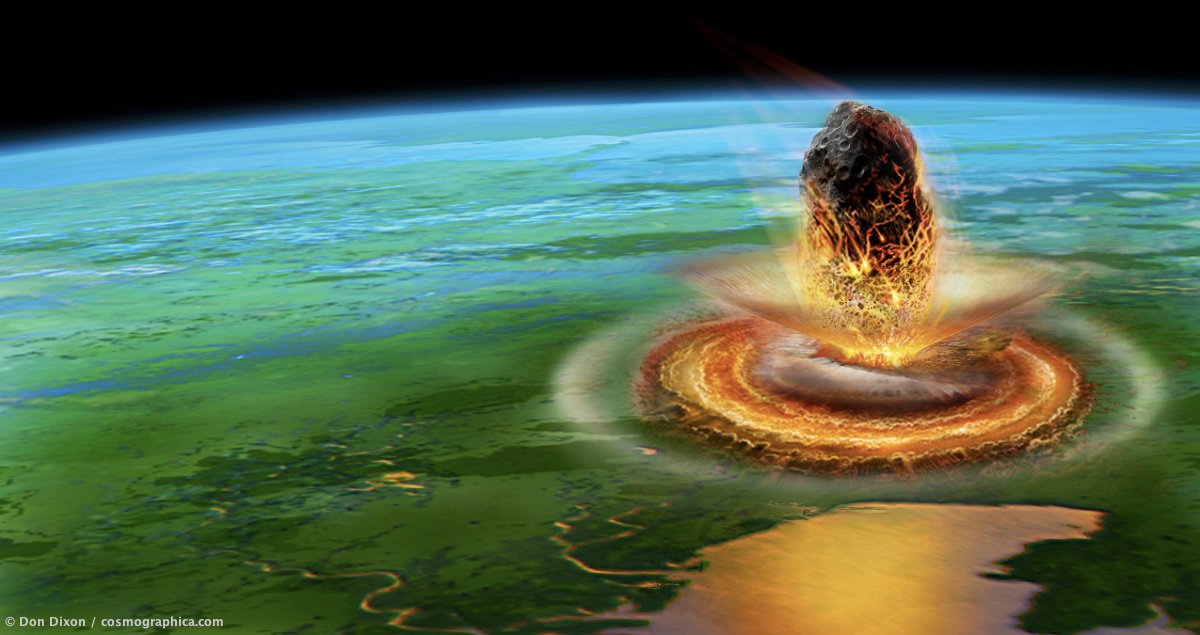
400-Yucatan-Impact
An asteroid 5-10 miles across impacts in the Yucatan to end the age of dinosaurs 65 million years ago. A fine layer of clay, rich in the element iridium -- more concentrated in meteorites than in terrestrial rocks -- marks the geological boundary between the Cretaceous and Tertiary eras. This clay layer is believed to have precipitated out of a planet-blanketing cloud of dust that was ejected into the atmosphere by the impact and subsequent fires. The dust darkened and cooled the earth so much that many species became extinct.
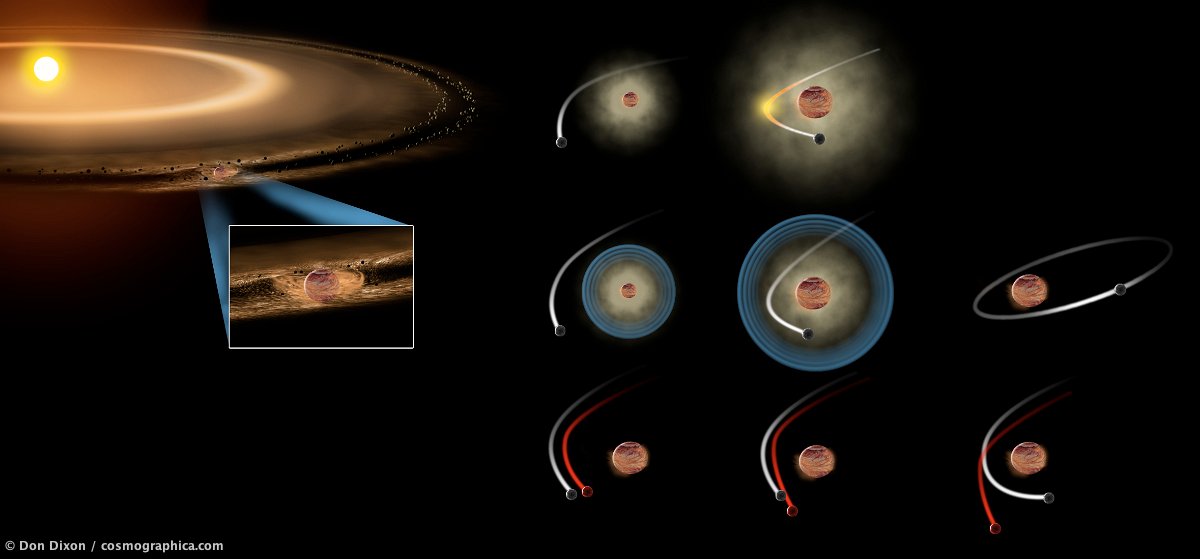
457-moon-capture-theory-diagram
Infographic shows processes for planet to aquire a satellite. A developing planet's halo of gas expands to capture a passing body (top). Its gravitational sphere of influence expands as well (middle). Interactions between passing asteroids may cause one to fall into orbit (bottom). Artwork © 2007 Don Dixon / cosmographica.com


475-end-of-cosmology
Diagram created for Scientific American depicting the view from earth in the far distant future, as the Milky Way and Andromeda Galaxy merge to create a giant elliptical galaxy. Ultimately, the last stars wink out and and the frozen cinder that is earth's surface is blasted smooth by a trillion years of micrometeorite bombardments. Only a few stars relieve the eternal night.
